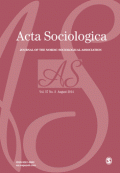
Introduction
This is a big book about a big topic – organizational innovation and invention. The work is panoramic, ranging over a vast array of theory, formal models, and case studies involving networks, markets, hier- archies, political systems, and still other complex organization forms. Sociology books this major come along only a few times in a human generation – and a case can be made that the last book of comparably far-reaching significance containing substantial mathematical sociology content was Coleman (1990). That work was fuelled by a rational choice perspective on social phenomena, which the Padgett and Powell volume (P&P) is not.
In a world where established institutions often reward narrow projects, one should applaud P&P’s grappling with a truly major, multifaceted, enormously messy puzzle – how socio-organizational inno- vation gets started, and why, in a few cases, it sets off irreversible changes in a far larger social order. This problem is profoundly important in a world brimming with institutional ossification, worldwide, offset by a few bright spots of organizational openness and constructive change (among them, the bio- tech industry, at least early on). To a surprising extent, this problem is also a neglected one. P&P (p. 434) likens much social scientific work on institutions, eliding processes of innovation and invention, to a play that begins with the second act.
Significant flaws in P&P’s intellectual architecture need to be noted at the outset. In many ways P&P is a group product (7 of 18 chapters are by Padgett and/or Powell alone; 6 are essays not co-authored by either, involving 13 other people) and exhibits the associated limitations. At close to 600 pages (densely printed with two columns per page), P&P is also far too sprawling, often repetitive, and in need of drastic condensation and streamlining. If ever a sociology treatise needed a user’s manual, P&P is it – and, in a Google-powered world of ‘skimmers’, many potentially interested audiences are likely to shy away from engaging with P&P’s numerous complex, nuanced, insightful lines of argument. That would be unfor- tunate for a work over 20 years in gestation. As a practical matter, there is need for a roadmap of key passages, few in number. Otherwise P&P is likely to remain next-to-impenetrable, with audiences falling back on capsule summaries.